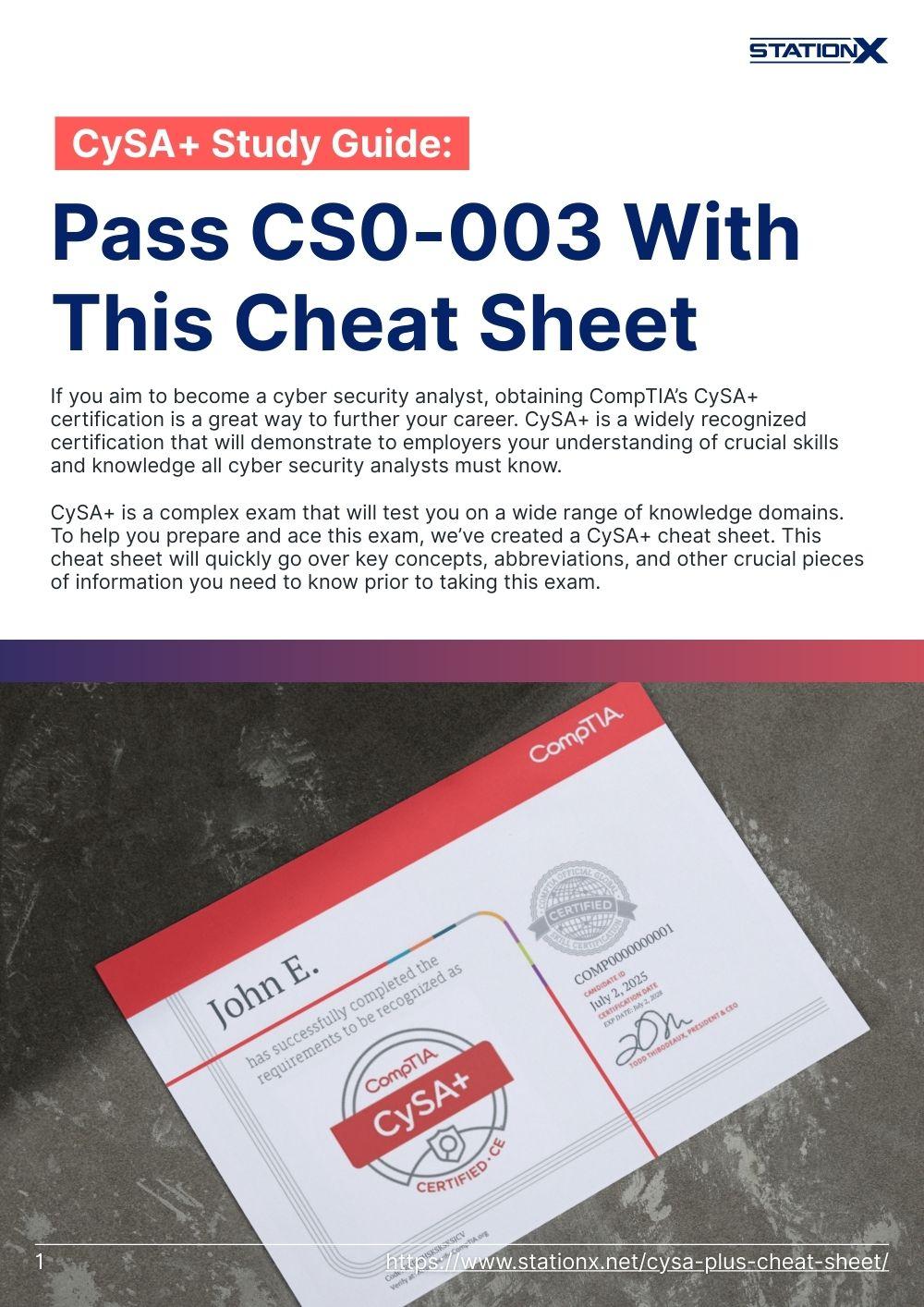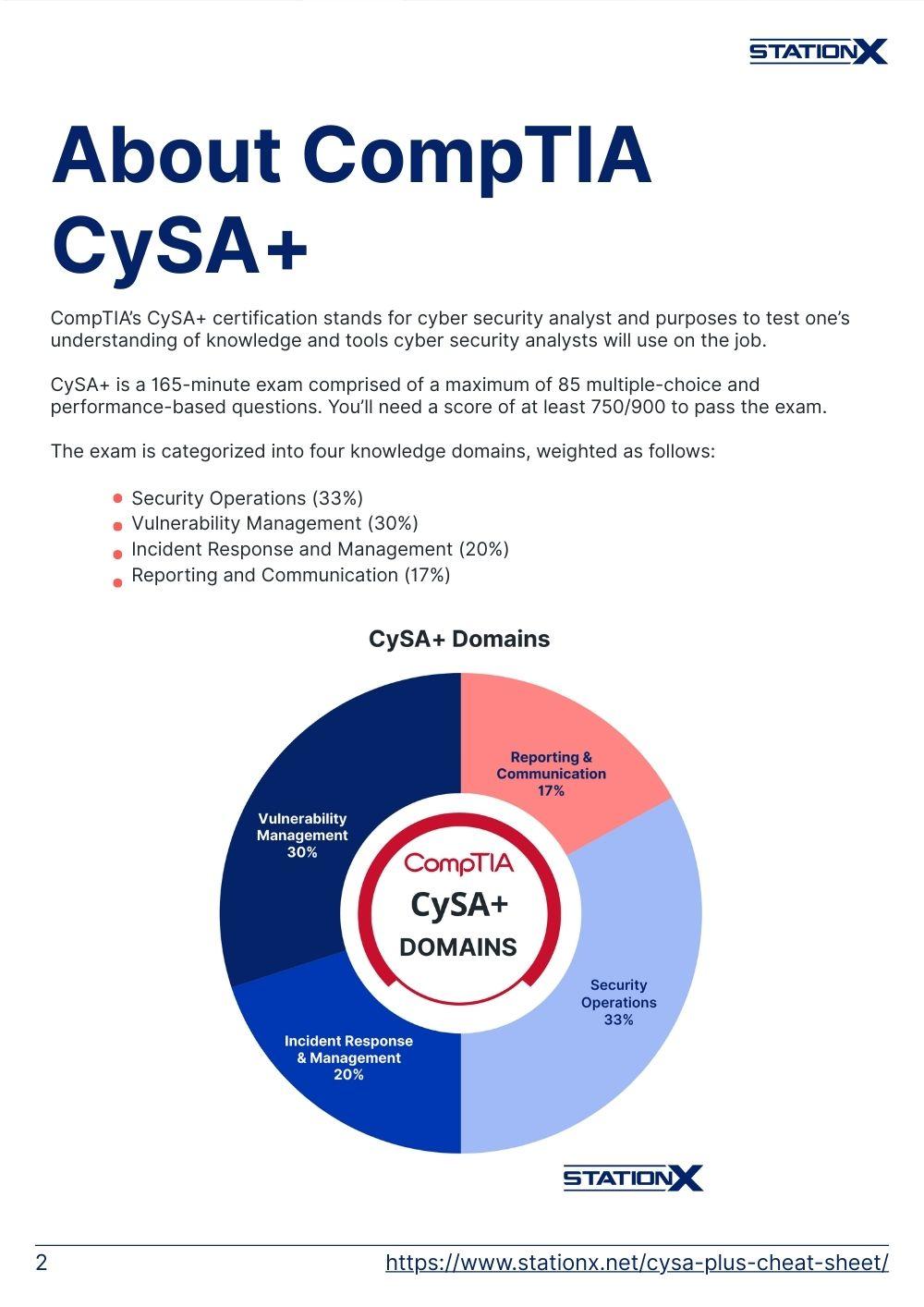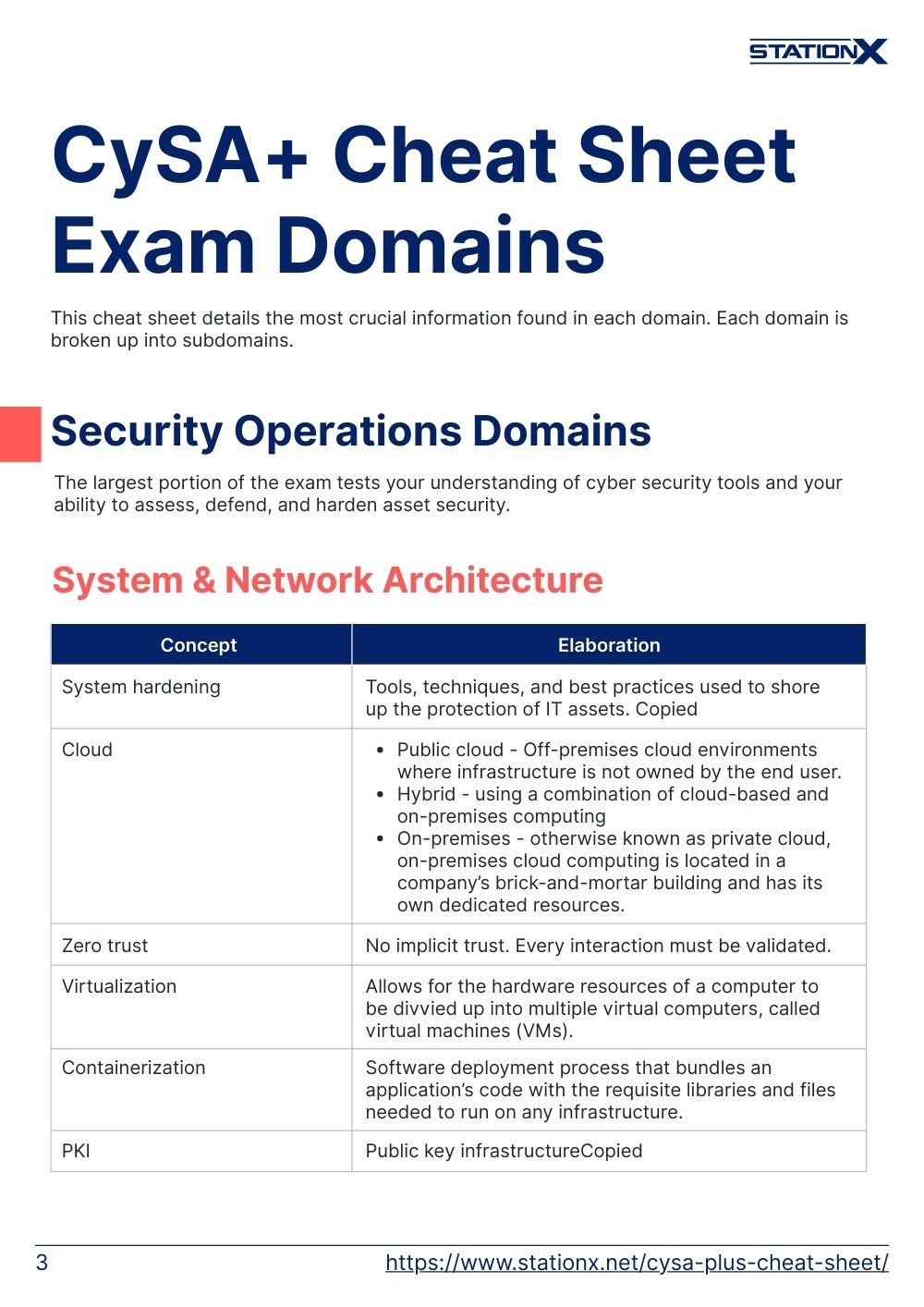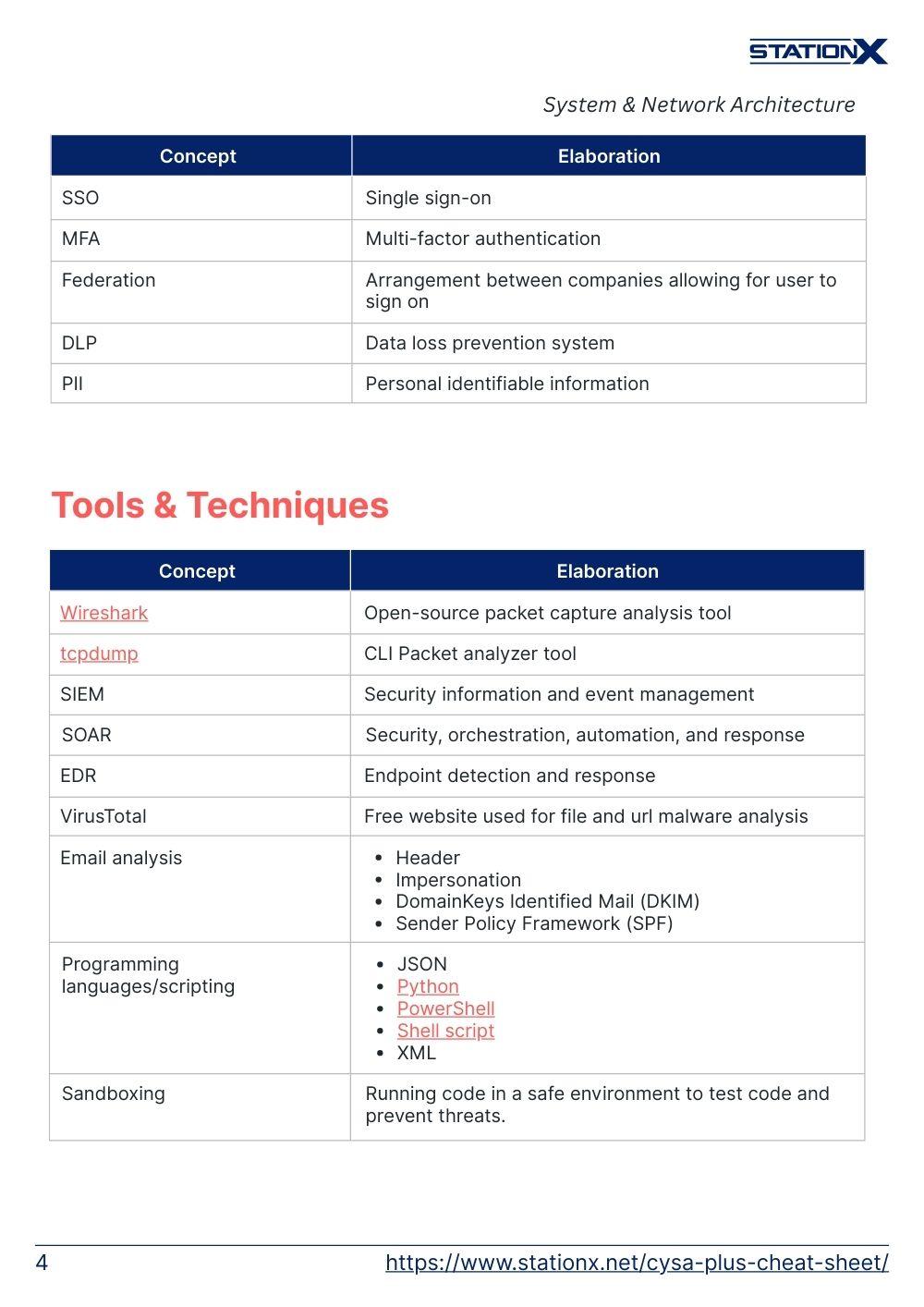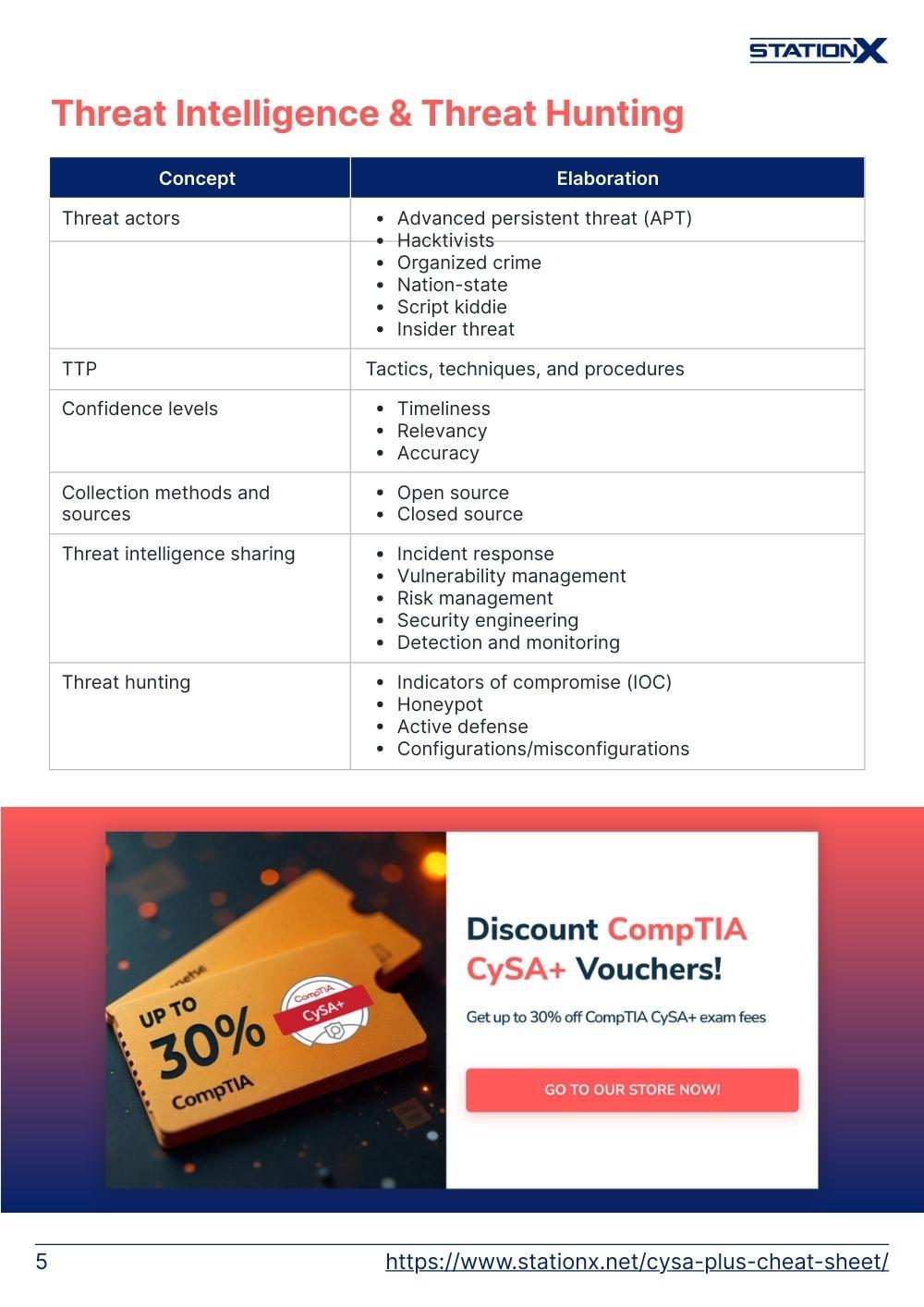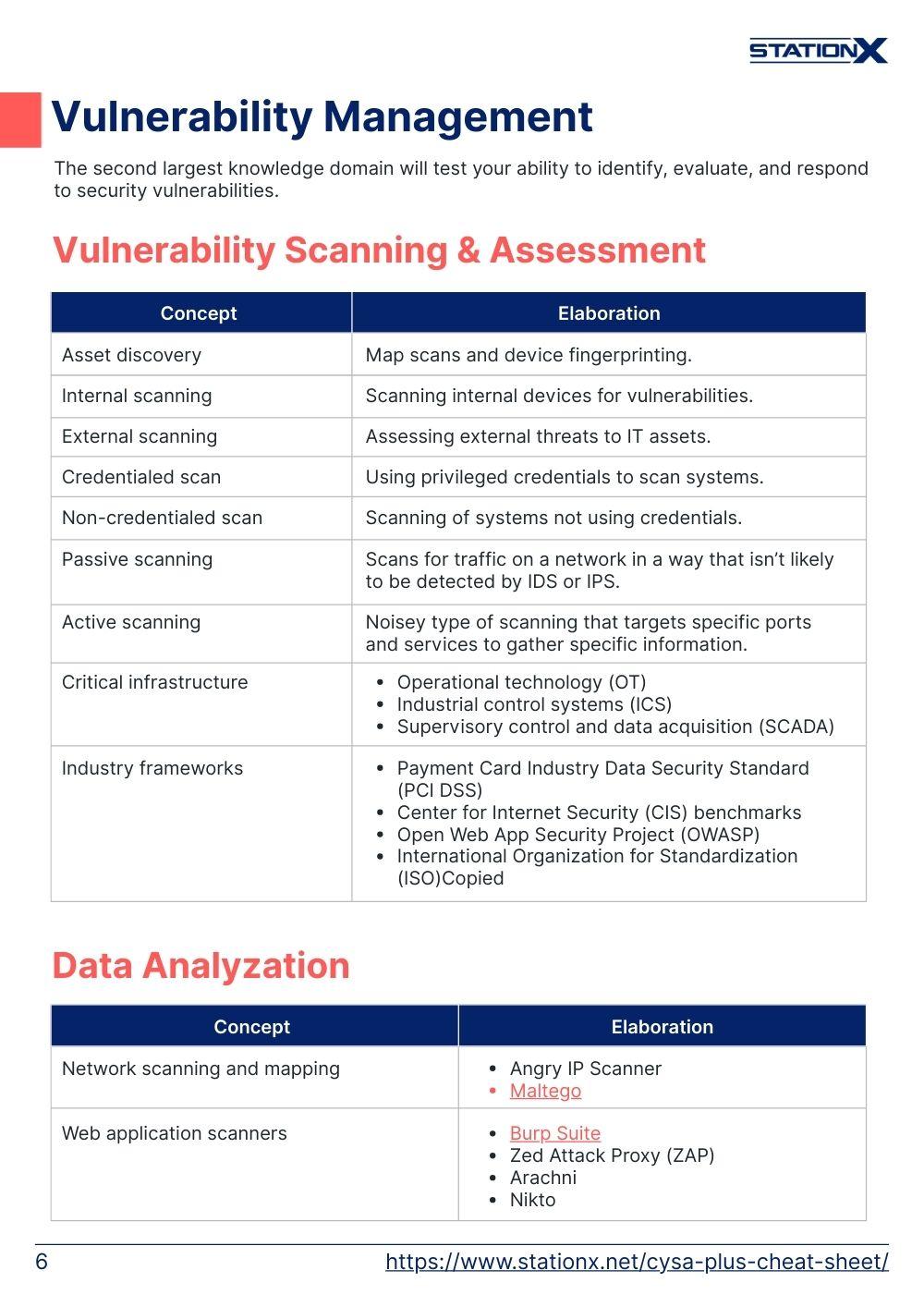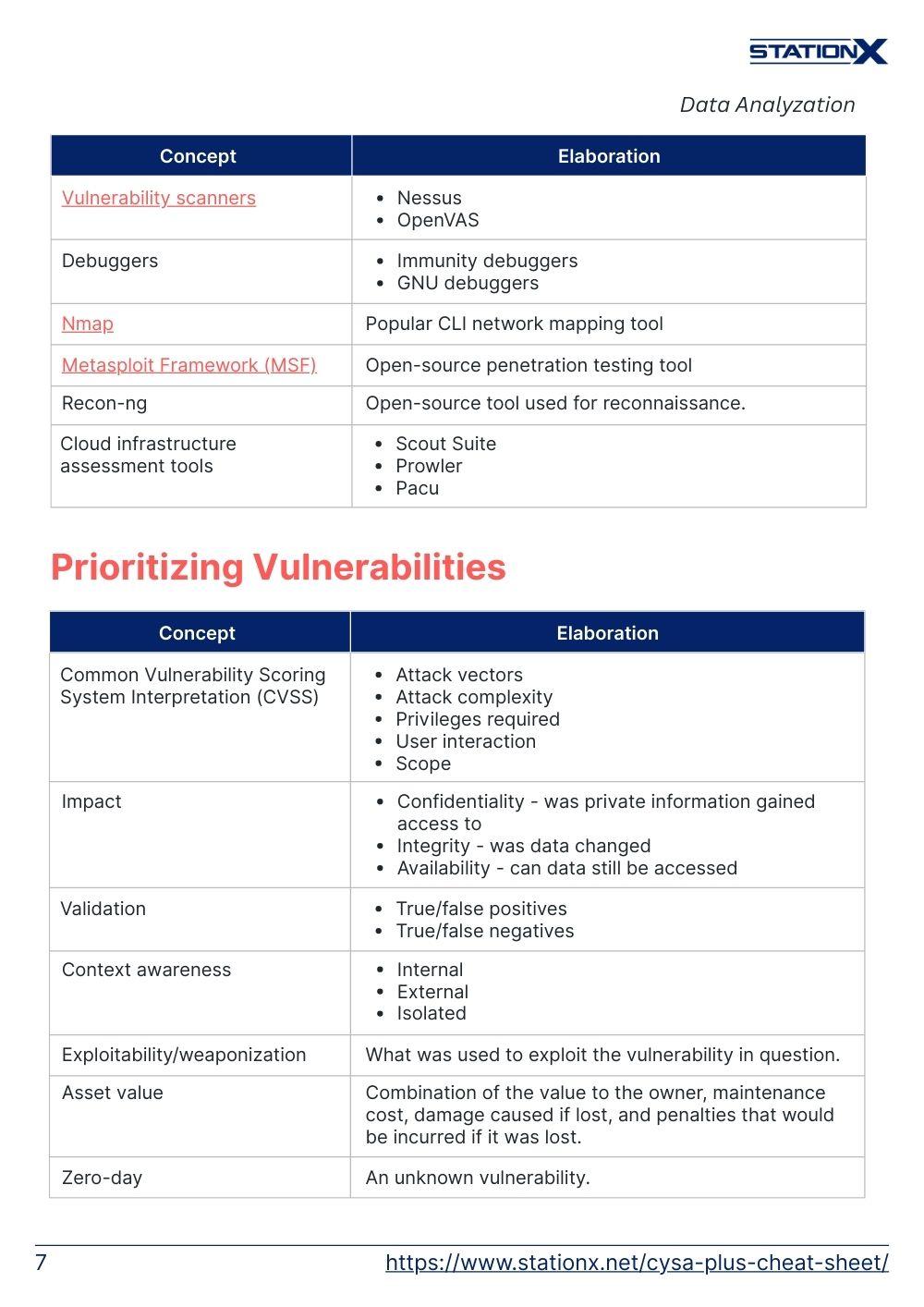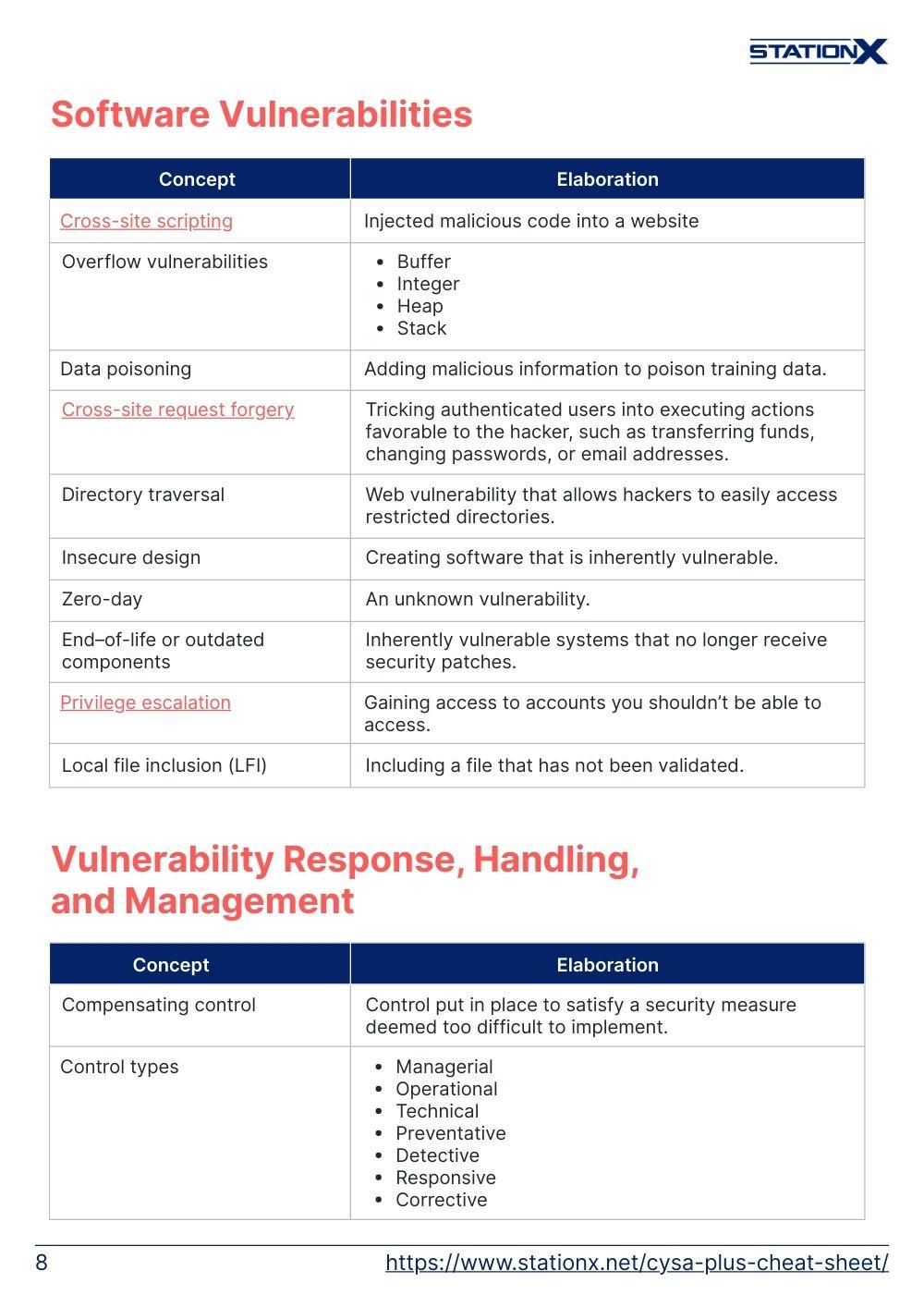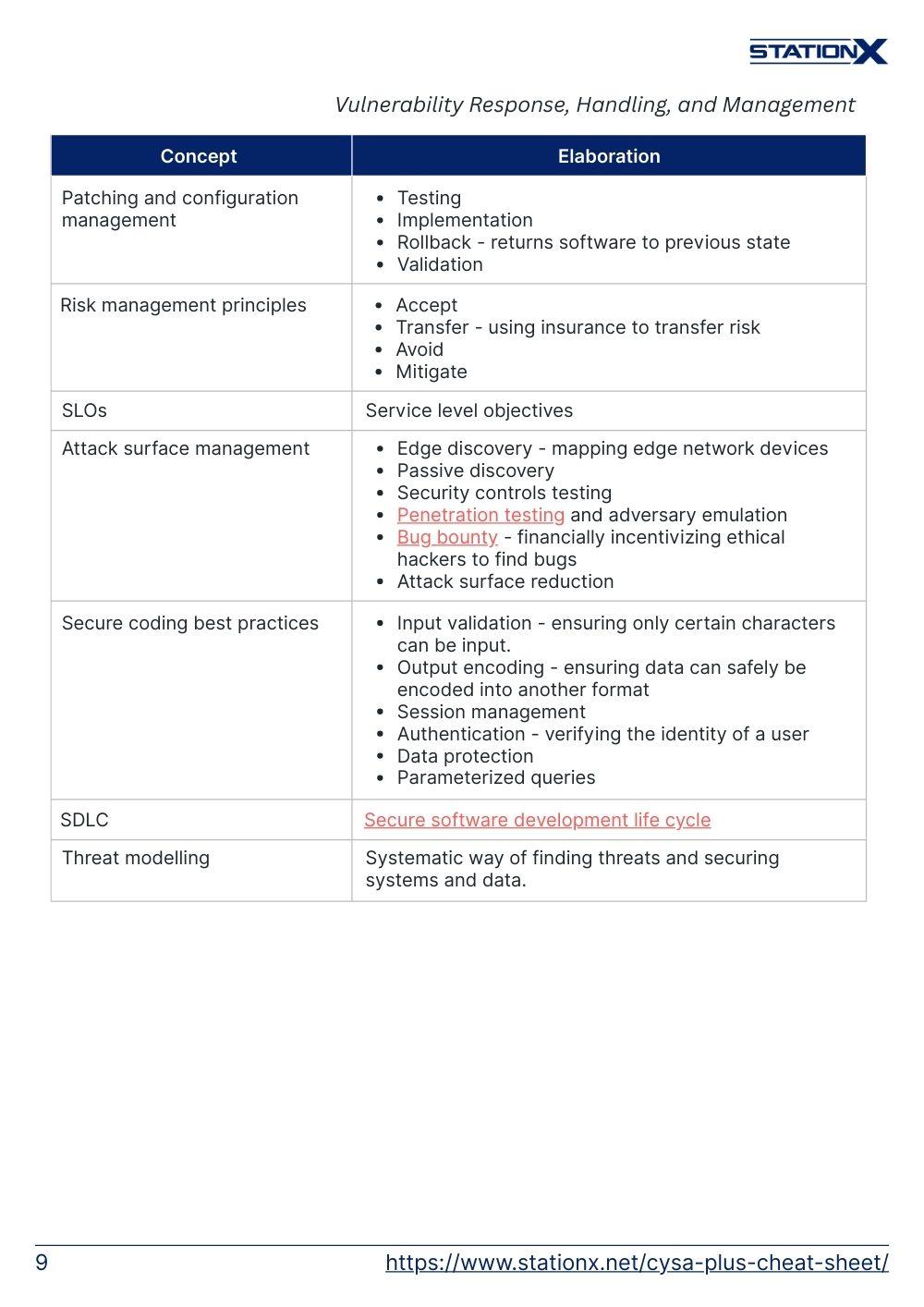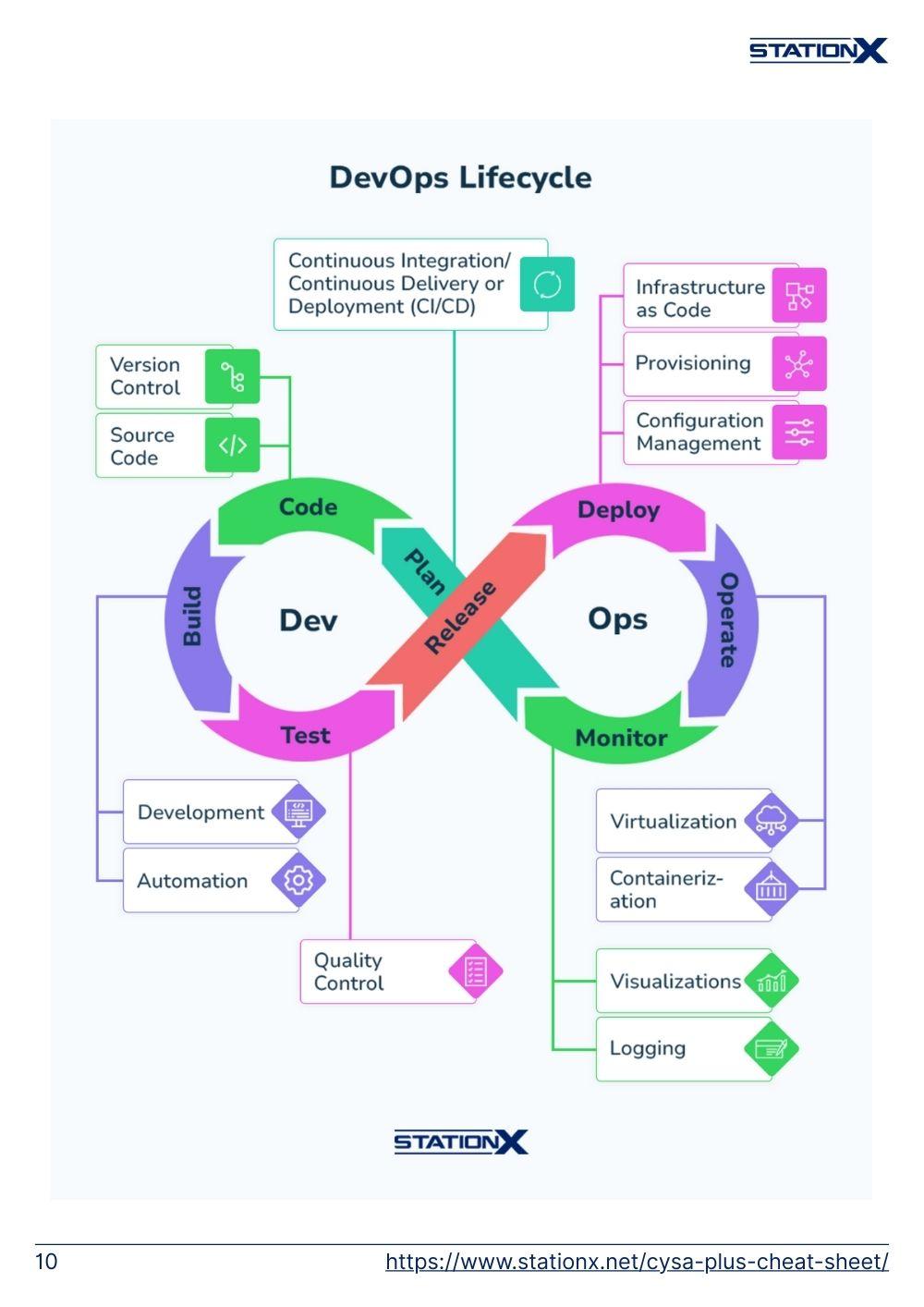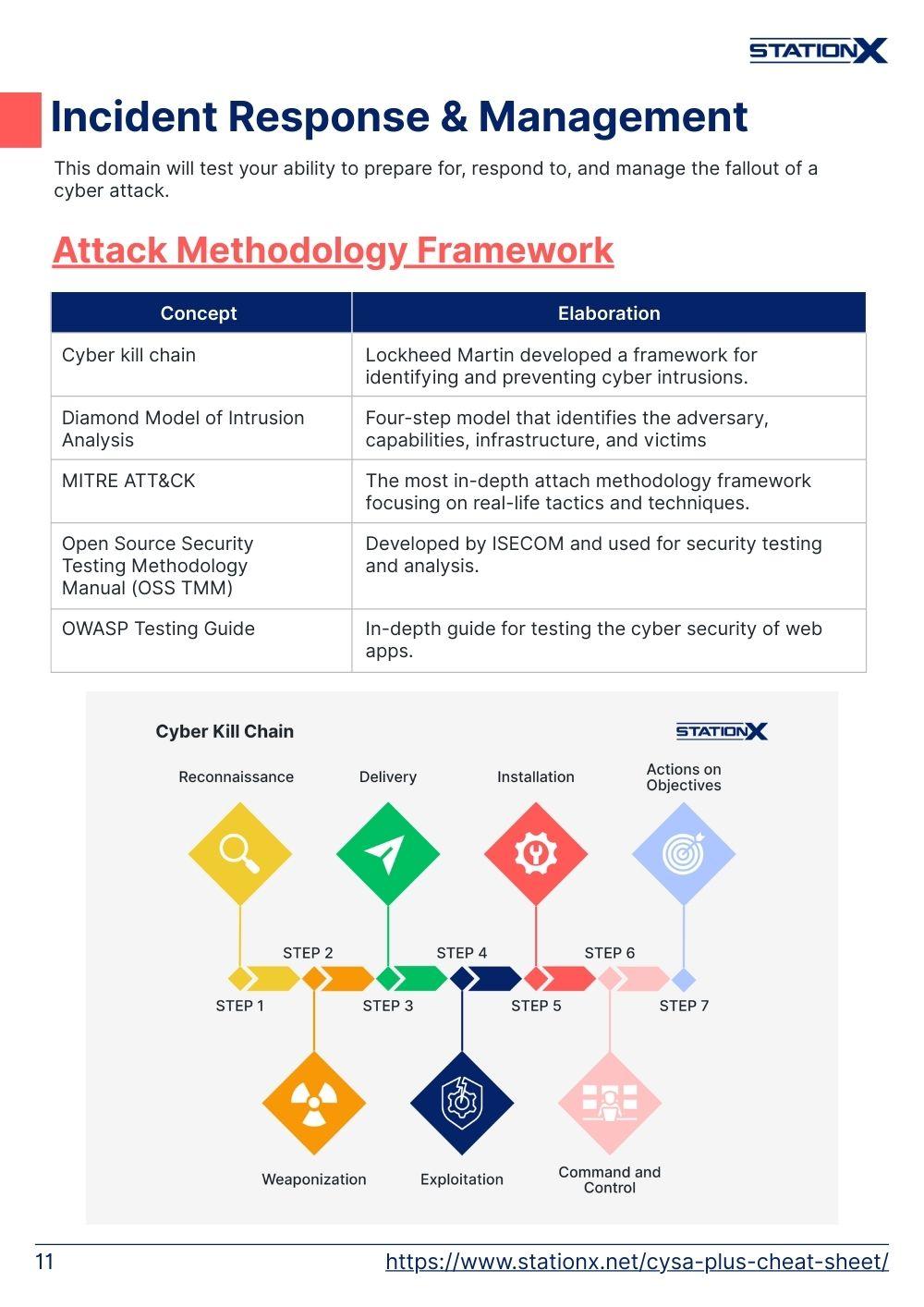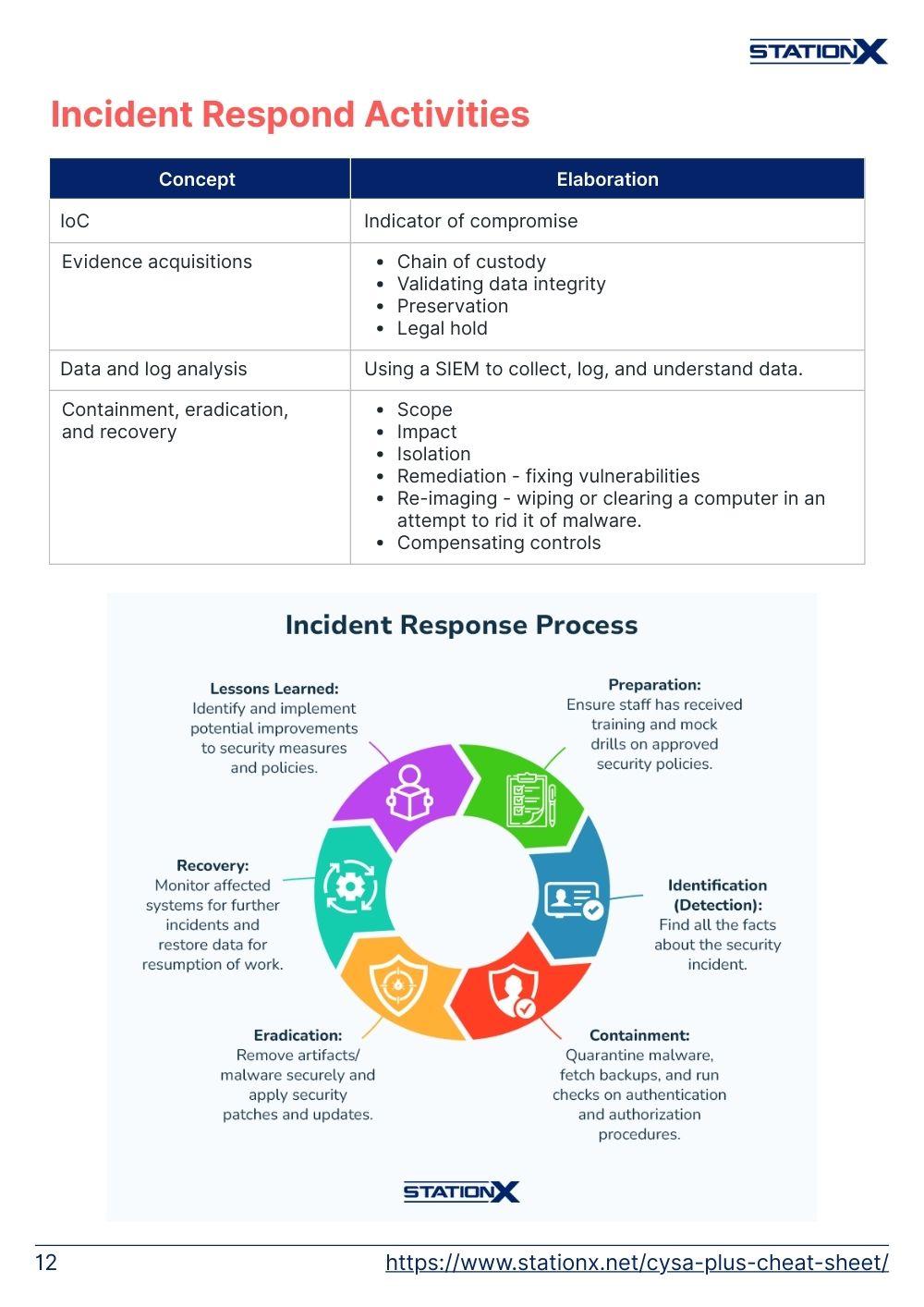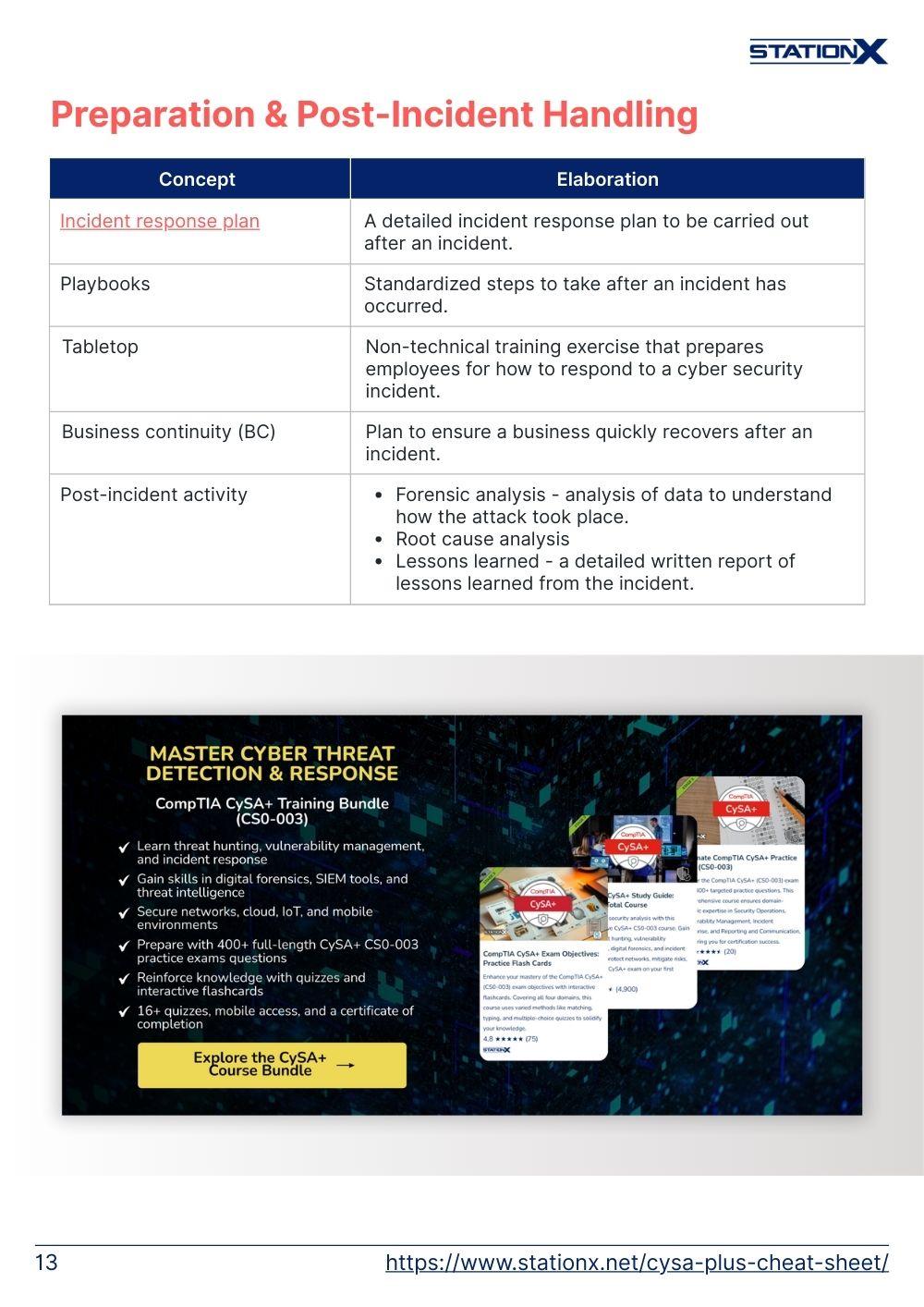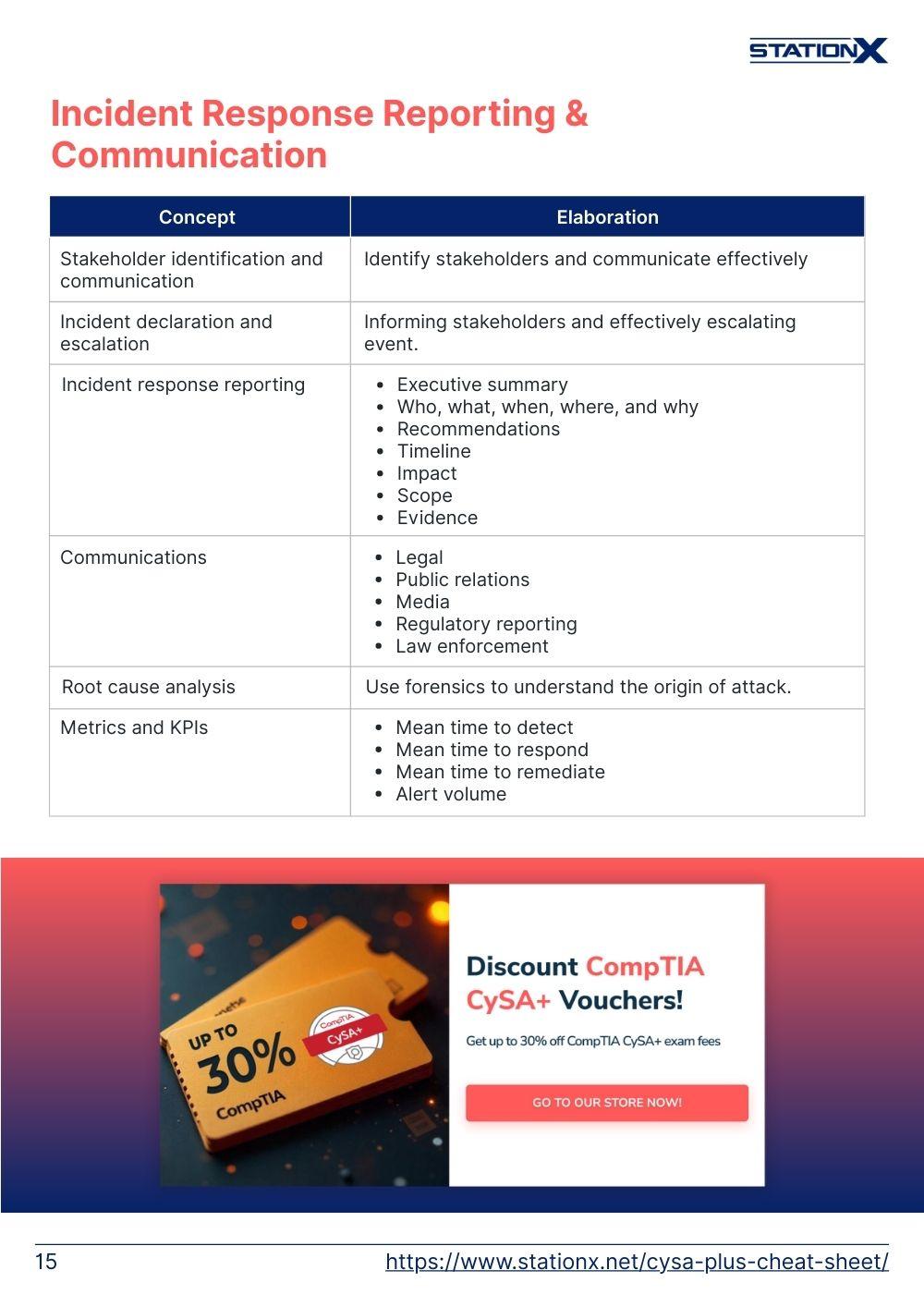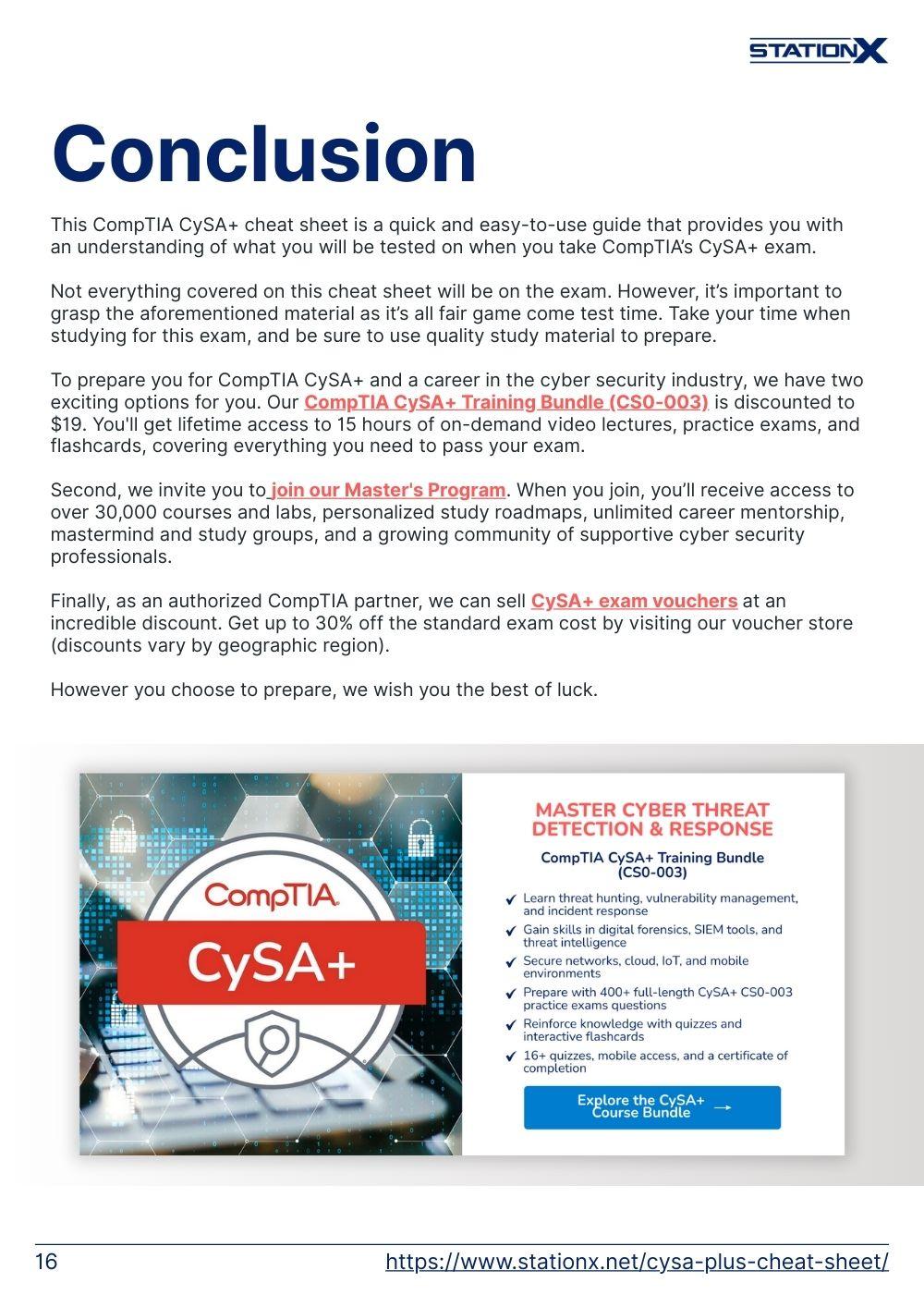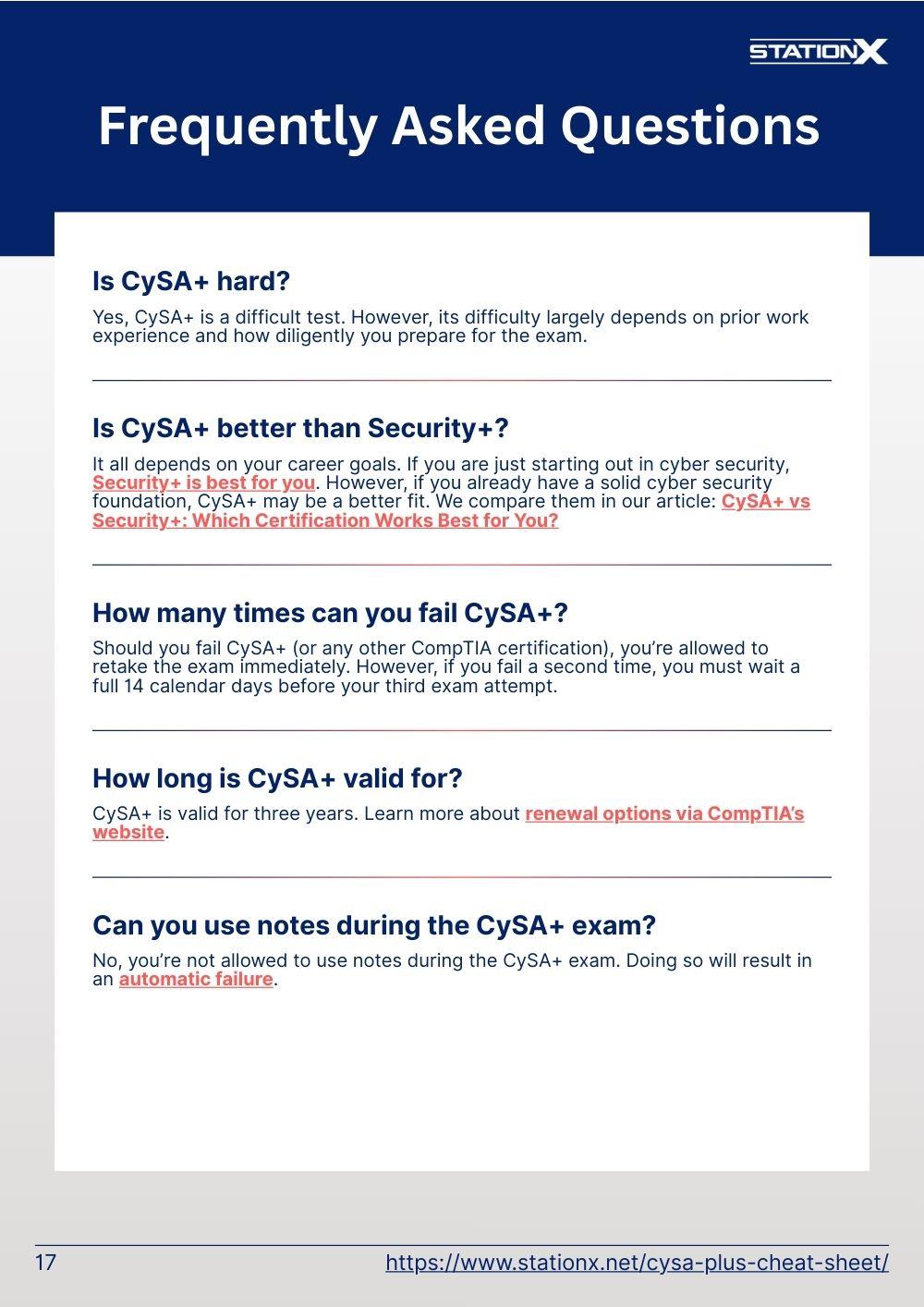If you aim to become a cyber security analyst, obtaining CompTIA’s CySA+ certification is a great way to further your career. CySA+ is a widely recognized certification that will demonstrate to employers your understanding of crucial skills and knowledge all cyber security analysts must know.
CySA+ is a complex exam that will test you on a wide range of knowledge domains. To help you prepare and ace this exam, we’ve created a CySA+ cheat sheet. This cheat sheet will quickly go over key concepts, abbreviations, and other crucial pieces of information you need to know prior to taking this exam.
Download this CompTIA CySA+ cheat sheet here.
CompTIA CySA+ Study Guide Search
Search our CompTIA CySA+ cheat sheet to find the right cheat for the term you're looking for. Simply enter the term in the search bar and you'll receive the matching cheats available.
About CompTIA CySA+

CompTIA’s CySA+ certification stands for cyber security analyst and purposes to test one’s understanding of knowledge and tools cyber security analysts will use on the job.
CySA+ is a 165-minute exam comprised of a maximum of 85 multiple-choice and performance-based questions. You’ll need a score of at least 750/900 to pass the exam.
The exam is categorized into four knowledge domains, weighted as follows:
- Security Operations (33%)
- Vulnerability Management (30%)
- Incident Response and Management (20%)
- Reporting and Communication (17%)

CySA+ Cheat Sheet Exam Domains
This cheat sheet details the most crucial information found in each domain. Each domain is broken up into subdomains.
Security Operations
The largest portion of the exam tests your understanding of cyber security tools and your ability to assess, defend, and harden asset security.
System & Network Architecture
| Concept | Elaboration |
| System hardening | Tools, techniques, and best practices used to shore up the protection of IT assets. |
| Cloud | • Public cloud - Off-premises cloud environments where infrastructure is not owned by the end user. • Hybrid - using a combination of cloud-based and on-premises computing • On-premises - otherwise known as private cloud, on-premises cloud computing is located in a company’s brick-and-mortar building and has its own dedicated resources. |
| Zero trust | No implicit trust. Every interaction must be validated. |
| Virtualization | Allows for the hardware resources of a computer to be divvied up into multiple virtual computers, called virtual machines (VMs). |
| Containerization | Software deployment process that bundles an application’s code with the requisite libraries and files needed to run on any infrastructure. |
| PKI | Public key infrastructure |
| SSO | Single sign-on |
| MFA | Multi-factor authentication |
| Federation | Arrangement between companies allowing for user to sign on |
| DLP | Data loss prevention system |
| PII | Personal identifiable information |
Tools & Techniques
| Concept | Elaboration |
| Wireshark | Open-source packet capture analysis tool |
| tcpdump | CLI Packet analyzer tool |
| SIEM | Security information and event management |
| SOAR | Security, orchestration, automation, and response |
| EDR | Endpoint detection and response |
| VirusTotal | Free website used for file and url malware analysis |
| Email analysis | • Header • Impersonation • DomainKeys Identified Mail (DKIM) • Sender Policy Framework (SPF) |
| Programming languages/scripting | • JSON • Python • PowerShell • Shell script • XML |
| Sandboxing | Running code in a safe environment to test code and prevent threats. |
Threat Intelligence & Threat Hunting
| Concept | Elaboration |
| Threat actors | • Advanced persistent threat (APT) • Hacktivists • Organized crime • Nation-state • Script kiddie • Insider threat |
| TTP | Tactics, techniques, and procedures |
| Confidence levels | • Timeliness • Relevancy • Accuracy |
| Collection methods and sources | • Open source • Closed source |
| Threat intelligence sharing | • Incident response • Vulnerability management • Risk management • Security engineering • Detection and monitoring |
| Threat hunting | • Indicators of compromise (IOC) • Honeypot • Active defense • Configurations/misconfigurations |
Vulnerability Management
The second largest knowledge domain will test your ability to identify, evaluate, and respond to security vulnerabilities.
Vulnerability Scanning & Assessment
| Concept | Elaboration |
| Asset discovery | Map scans and device fingerprinting. |
| Internal scanning | Scanning internal devices for vulnerabilities. |
| External scanning | Assessing external threats to IT assets. |
| Credentialed scan | Using privileged credentials to scan systems. |
| Non-credentialed scan | Scanning of systems not using credentials. |
| Passive scanning | Scans for traffic on a network in a way that isn’t likely to be detected by IDS or IPS. |
| Active scanning | Noisey type of scanning that targets specific ports and services to gather specific information. |
| Critical infrastructure | • Operational technology (OT) • Industrial control systems (ICS) • Supervisory control and data acquisition (SCADA) |
| Industry frameworks | • Payment Card Industry Data Security Standard (PCI DSS) • Center for Internet Security (CIS) benchmarks • Open Web App Security Project (OWASP) • International Organization for Standardization (ISO) |
Data Analyzation
| Concept | Elaboration |
| Network scanning and mapping | • Angry IP Scanner • Maltego |
| Web application scanners | • Burp Suite • Zed Attack Proxy (ZAP) • Arachni • Nikto |
| Vulnerability scanners | • Nessus • OpenVAS |
| Debuggers | • Immunity debuggers • GNU debuggers |
| Nmap | Popular CLI network mapping tool |
| Metasploit Framework (MSF) | Open-source penetration testing tool |
| Recon-ng | Open-source tool used for reconnaissance. |
| Cloud infrastructure assessment tools | • Scout Suite • Prowler • Pacu |
Prioritizing Vulnerabilities
| Concept | Elaboration |
| Common Vulnerability Scoring System Interpretation (CVSS) | • Attack vectors • Attack complexity • Privileges required • User interaction • Scope |
| Impact | • Confidentiality - was private information gained access to • Integrity - was data changed • Availability - can data still be accessed |
| Validation | • True/false positives • True/false negatives |
| Context awareness | • Internal • External • Isolated |
| Exploitability/weaponization | What was used to exploit the vulnerability in question. |
| Asset value | Combination of the value to the owner, maintenance cost, damage caused if lost, and penalties that would be incurred if it was lost. |
| Zero-day | An unknown vulnerability. |
Software Vulnerabilities
| Concept | Elaboration |
| Cross-site scripting | Injected malicious code into a website |
| Overflow vulnerabilities | • Buffer • Integer • Heap • Stack |
| Data poisoning | Adding malicious information to poison training data. |
| Cross-site request forgery | Tricking authenticated users into executing actions favorable to the hacker, such as transferring funds, changing passwords, or email addresses. |
| Directory traversal | Web vulnerability that allows hackers to easily access restricted directories. |
| Insecure design | Creating software that is inherently vulnerable. |
| End–of-life or outdated components | Inherently vulnerable systems that no longer receive security patches. |
| Privilege escalation | Gaining access to accounts you shouldn’t be able to access. |
| Local file inclusion (LFI) | Including a file that has not been validated. |
Vulnerability Response, Handling, and Management
| Concept | Elaboration |
| Compensating control | Control put in place to satisfy a security measure deemed too difficult to implement. |
| Control types | • Managerial • Operational • Technical • Preventative • Detective • Responsive • Corrective |
| Patching and configuration management | • Testing • Implementation • Rollback - returns software to previous state • Validation |
| Risk management principles | • Accept • Transfer - using insurance to transfer risk • Avoid • Mitigate |
| SLOs | Service level objectives |
| Attack surface management | • Edge discovery - mapping edge network devices • Passive discovery • Security controls testing • Penetration testing and adversary emulation • Bug bounty - financially incentivizing ethical hackers to find bugs • Attack surface reduction |
| Secure coding best practices | • Input validation - ensuring only certain characters can be input. • Output encoding - ensuring data can safely be encoded into another format • Session management • Authentication - verifying the identity of a user • Data protection • Parameterized queries |
| SDLC | Secure software development life cycle |
| Threat modeling | Systematic way of finding threats and securing systems and data. |

Incident Response & Management
This domain will test your ability to prepare for, respond to, and manage the fallout of a cyber attack.
Attack Methodology Framework
| Concept | Elaboration |
| Cyber kill chain | Lockheed Martin developed a framework for identifying and preventing cyber intrusions. |
| Diamond Model of Intrusion Analysis | Four-step model that identifies the adversary, capabilities, infrastructure, and victims |
| MITRE ATT&CK | The most in-depth attach methodology framework focusing on real-life tactics and techniques. |
| Open Source Security Testing Methodology Manual (OSS TMM) | Developed by ISECOM and used for security testing and analysis. |
| OWASP Testing Guide | In-depth guide for testing the cyber security of web apps. |

Incident Respond Activities
| Concept | Elaboration |
| IoC | Indicator of compromise |
| Evidence acquisitions | • Chain of custody • Validating data integrity • Preservation • Legal hold |
| Data and log analysis | Using a SIEM to collect, log, and understand data. |
| Containment, eradication, and recovery | • Scope • Impact • Isolation • Remediation - fixing vulnerabilities • Re-imaging - wiping or clearing a computer in an attempt to rid it of malware. • Compensating controls |

Preparation & Post-Incident Handling
| Concept | Elaboration |
| Incident response plan | A detailed incident response plan to be carried out after an incident. |
| Playbooks | Standardized steps to take after an incident has occurred. |
| Tabletop | Non-technical training exercise that prepares employees for how to respond to a cyber security incident. |
| Business continuity (BC) | Plan to ensure a business quickly recovers after an incident. |
| Post-incident activity | • Forensic analysis - analysis of data to understand how the attack took place. • Root cause analysis • Lessons learned - a detailed written report of lessons learned from the incident. |
Reporting & Communication
17% of the questions you receive will pertain to the day-to-day tasks of a cyber security analyst that relate to reporting and communicating security information to co-workers, stakeholders, and those not well versed in the language of cyber security.
Vulnerability Management Reporting & Communication
| Concept | Elaboration |
| Vulnerability management reporting | • Vulnerabilities • Affected hosts • Risk score • Mitigation • Recurrence • Prioritization |
| Action plans | • Configuring management • Patching • Compensating controls • Awareness, education, and training • Changing business requirements |
| Inhibitors to remediation | • Memorandum of understanding (MOU) • Service-level agreement (SLA) • Organizational governance • Business process interruption • Degrading functionality • Legacy systems • Proprietary systems |
| Metrics and key performance indicators (KPIs) | • Trends • Top 10 • Critical vulnerabilities and zero-days • Service level objectives (SLOs) |
Incident Response Reporting & Communication
| Concept | Elaboration |
| Stakeholder identification and communication | Identify stakeholders and communicate effectively |
| Incident declaration and escalation | Informing stakeholders and effectively escalating event. |
| Incident response reporting | • Executive summary • Who, what, when, where, and why • Recommendations • Timeline • Impact • Scope • Evidence |
| Communications | • Legal • Public relations • Media • Regulatory reporting • Law enforcement |
| Root cause analysis | Use forensics to understand the origin of attack. |
| Metrics and KPIs | • Mean time to detect • Mean time to respond • Mean time to remediate • Alert volume |
Conclusion
This CompTIA CySA+ cheat sheet is a quick and easy-to-use guide that provides you with an understanding of what you will be tested on when you take CompTIA’s CySA+ exam.
Not everything covered on this cheat sheet will be on the exam. However, it’s important to grasp the aforementioned material as it’s all fair game come test time. Take your time when studying for this exam, and be sure to use quality study material to prepare.
To prepare you for CompTIA CySA+ and a career in the cyber security industry, we have two exciting options for you. Our CompTIA CySA+ Training Bundle (CS0-003) gets you lifetime access to 15 hours of on-demand video lectures, practice exams, and flashcards, covering everything you need to pass your exam.
Second, we invite you to join our Master's Program. When you join, you’ll receive access to over 30,000 courses and labs, personalized study roadmaps, unlimited career mentorship, mastermind and study groups, and a growing community of supportive cyber security professionals.
Finally, as an authorized CompTIA partner, we can sell CySA+ exam vouchers at an incredible discount. Get up to 30% off the standard exam cost by visiting our voucher store (discounts vary by geographic region).
However you choose to prepare, we wish you the best of luck.


